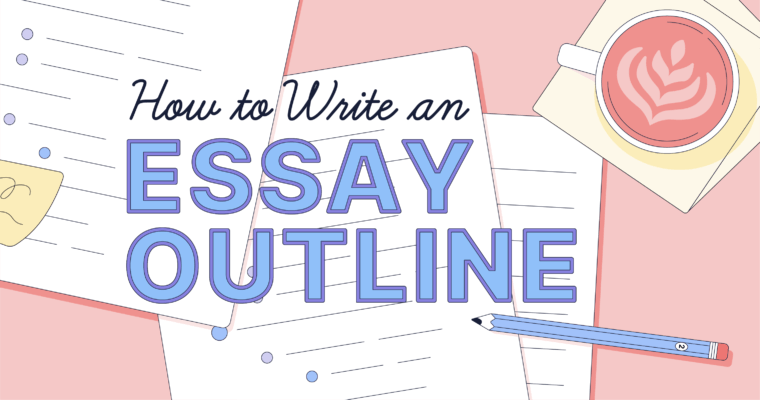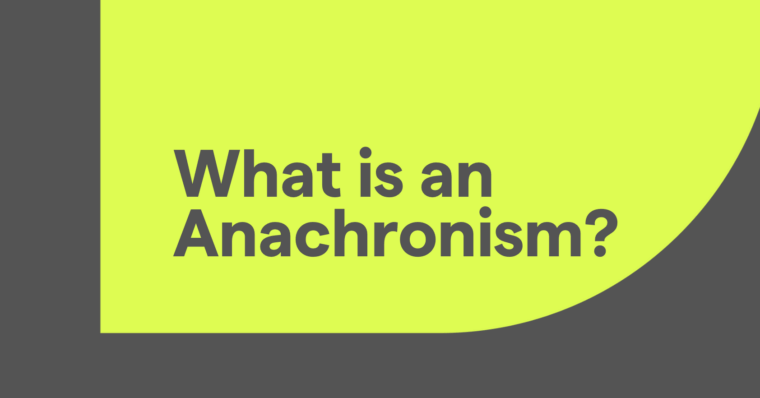
An essay outline is essentially an essay’s skeleton. It’s a text representation of an essay’s thesis and key supporting points.
An essay outline serves multiple purposes, including helping its writer organize their thoughts before they start writing, giving readers a quick synopsis of the essay, and acting as a roadmap for the writer to follow as they work through their supporting paragraphs. Writing an essay outline is a fairly straightforward process, and in this blog post, we’ll walk you through it.
What is an essay outline?
An essay outline is an informal document that lists and orders the parts of an essay so the writer can stay on track and make sure they don’t miss anything. Because it’s informal, an outline is usually written in incomplete sentences, similar to notes. This can make it easier for you to determine the most effective way to transition between paragraphs and the ideal order in which to present your supporting paragraphs.
Outlining is an important early stage in the writing process. It’s where you organize all the thoughts and insights you brainstormed into a neat roadmap to follow as you write. If you get stuck as you’re writing your essay, your outline is there to help you get back on track.
It’s not uncommon for professors to require their students to submit essay outlines before getting started on their essays. Usually, this is so the professor can make sure each student is on the right track in terms of choosing an essay topic that has a sufficient amount of sources to reference, that it fits the parameters of the assignment, and that the student understands the assignment.
Basic parts of an essay
Although every essay is unique, they all adhere to the same basic essay structure. Every essay starts with an introduction section, follows it with at least one body paragraph that supports the points made in the introduction, then wraps up with a conclusion section that reiterates the author’s thesis and summarizes the body paragraphs.
Introduction
The first section of your essay is called the introduction. As this name implies, this is where you introduce the topics you’ll be covering in your essay. It’s also where you state your thesis, the definitive sentence where you make your argument clear.
Your essay’s introduction should be concise and quickly hook the reader.
Body sections
Your essay might only need two supporting paragraphs, or it could need four or five (or more). Unless your professor assigned a specific number of body paragraphs for your essay, how many of these you write is your call.
If you’re supporting your thesis with multiple sources, a general rule to follow is one body paragraph per source cited. However, the type of essay you’re writing might require you to deviate from this. For example, in a compare-and-contrast essay, you’ll write one section (at least one paragraph long) for each comparison and contrast you make. In an analytical essay, you’ll write one body section for each point you make to support your thesis.
Conclusion
Once you reach your conclusion, you’re almost there! This is the part of your essay where you wrap it up and summarize the points you made in your body paragraphs. If you have any final thoughts or perspectives you want to impress on your reader before they finish reading your essay, this is where you make them.
4 steps for writing an essay outline
So you’re sitting at your desk, ready to write your outline. Great!
…how do you get started?
Just follow these four steps to craft an outline that makes the rest of the writing process simple.
1 Determine your objective
Think about your thesis statement. You might not have the exact wording at this point, but you should have a general idea of the point you’ll make and defend in your essay. Having a clear objective enables you to work through your brainstorming notes and craft an outline that hits all the necessary points you need to support that objective.
2 Filter out the fluff
When you brainstormed, you explored every possible avenue to go down in your writing and every potential piece of information to include.
Now it’s time to go through your brainstorming notes and pick out the points that will most effectively achieve your goal for your essay. For each piece of information you jotted down, ask yourself “how does this prove my point?” If you can answer that question with a clear, thoughtful response, add it to your list of points to make in your essay.
3 Identify the points you’ll make in each paragraph
Using the list of points you wrote down, identify the key arguments you’ll make in your essay. These will be your body sections. For example, in an argumentative essay about why your campus needs to install more water fountains, you might make points like:
- Providing water fountains helps students save money
- Fountains reduce plastic waste
- Readily available water can cut down heat exhaustion incidents
Jot down the facts, anecdotes, and statistics that support each of these arguments. For example, you might cite the number of disposable water bottles recovered from campus grounds last year in your section on how water fountains reduce plastic waste. These supporting points are part of your essay outline.
4 Write your outline using a standard template
With your key topics and supporting points clearly defined, it’s time to actually write your outline. Using a template for the type of essay you’re writing (more on that in the next section), format your key points into a clear, organized frame that you’ll flesh out with content when you write your first draft.
Essay outline examples
Although every outline follows the same general structure, there are a few key differences to keep in mind when you’re outlining different kinds of essays. Take a look at how these example outlines for various essay types are similar as well as where they differ:
Argumentative essays
Here is an example outline argumentative essay:
Title: Italian Ice is a Superior Dessert to Ice Cream
- Introduction
- Introduce the differences between Italian ice and ice cream, touch on how popular each is.
- Thesis: Italian ice is a healthier, more refreshing, more environmentally friendly dessert than ice cream.
- Italian ice is lower in calories than ice cream
- Cite the average amount of calories in a serving of Italian ice vs. ice cream
- Cite how Italian ice thus fits more easily into most consumers’ daily caloric allotment
- Italian ice is vegan
- Discuss the benefits of consuming vegan vs. animal-sourced products
- Discuss how Italian ice is vegan, making it accessible to both vegans and non-vegans and a healthier, more environmentally conscious choice for all
- Italian ice is more refreshing than ice cream on a hot day
- Because of the lack of dairy, Italian ice is a more refreshing treat than ice cream on a hot day
- Discuss anecdotes about dairy making consumers feel hotter and not refreshed
- Conclusion
- Reiterate why Italian ice is a better dessert than ice cream and summarize supporting points.
Admissions essays
Take a look at this admissions essay outline:
Title: Arigato, Sato Sensei
- Introduction
- My Japanese teacher was the most influential teacher I had in high school because she taught me more than just a language—she taught me how language shapes perspective.
- Thesis: Choosing to study Japanese in high school changed my perspective on myself, my community, and my role in society
- Japanese is a difficult language for English speakers to learn
- Discuss how I struggled in Japanese class and wanted to give up
- State how Sato Sensei encouraged me to keep trying instead of changing to another language
- Culture is built into language
- Learning Japanese was more than memorizing vocabulary and copying hiragana and katakana; it’s understanding Japanese cultural perspectives and concepts versus Western ones
- How I thrived during my summer in Japan
- How Japanese language skills enabled me to succeed during my summer abroad
- How I understood cultural nuances through my understanding of the language
- Conclusion
- With the perspective I developed as an American student who studied Japanese, I’m well-equipped to succeed as an international business major.
Persuasive essays
Here’s an example of a persuasive essay outline:
Title: We Need More Security Cameras in the Student Parking Deck
- Introduction
- Vehicle break-ins are far too common on campus
- Thesis: The current level of parking deck security is insufficient
- Students’ vehicles are broken into every day
- State car break-in statistics and any related stats, like the average cost of repairs to broken-into vehicles and value of goods stolen
- Increased security improves community well-being
- Discuss the intangible value of increased security with quotes and anecdotes
- The results justify the cost
- Cite statistics on how other campuses reduced break-ins by installing more security cameras
- State the actual cost of installing sufficient security
- Conclusion
- Summarize the points made and emphasize how community safety should be a top priority for campus administration. Then, reiterate how more security cameras in the parking deck would improve safety.
Personal essays
Here is an outline example for a personal essay:
Title: The Two Best Birthdays of my Life
- Introduction
- Introducing your feelings about birthdays and how you like to celebrate yours
- Thesis: The two best birthdays of my life were my 17th and 22nd
- My 17th birthday
- I got my driver’s license and drove to my first concert with my best friends
- I still have the ticket stub and wristband from that night
- My 22nd birthday
- At first, I thought everybody had forgotten my birthday. I was devastated
- Then, my siblings surprised me by traveling six hours to pick me up and take me to the art exhibit I’d been wanting to see
- Conclusion
- My 17th and 22nd birthdays were particularly meaningful because of the points cited above.
- Perhaps finish with a parting thought on looking forward to more great birthday celebrations
Outlining is just one step to great writing
Once you’re finished writing your outline, follow the rest of the writing process steps to complete your essay.
When it’s time to edit your work, Grammarly can help you polish your draft into a perfectly publishable piece of writing. Grammarly catches spelling mistakes, grammar errors, and gives you feedback on all the tones present in your writing to help you make any necessary adjustments to strike a clear, consistent tone that accurately communicates exactly what you need to say.






